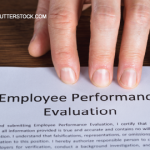
Sashkin / shutterstock.com
CHICAGO—Resolving conflict doesn’t start with clever strategizing, but with understanding the bigger picture and the factors that led to conflict in the first place, from cultural differences to resistance to change, an expert said at the 2018 ACR/ARHP Annual Meeting in a session about how to be a better leader.
“To me, what’s often missing are the contexts and the determinants,” said Quentin Eichbaum, MD, PhD, MPH, professor of pathology and professor of medical education and administration at Vanderbilt University Medical Center, Nashville, Tenn. Conflicts can be rooted in having different perceptions of the same events and situations, different understandings of language, cultural differences and many other factors. Dr. Eichbaum offered eight major categories to help you diagnose what you’re dealing with.
- Perspectives and perceptions: In conflicts, Dr. Eichbaum said, the parties “view each other as if they are each looking through a camera lens. Stand back a little bit sometimes and think, ‘This person I’m talking to is looking at it through another lens,’ and take that into account,” he said.
- Language and communication: Two people can have drastically different conceptions of the same word, said Dr. Eichbaum. For example, “tree” can conjure images of an oak for one person and a beachside palm tree for another. When someone speaks, they encode a message in their words that must be decoded by the listener. Conflict arises when two people don’t share frames of reference and the message is decoded in a way other than intended.
- People and emotions vs. positions and situations: Conflicts can be resolved or avoided when people and emotions remain separate from circumstances. But people often fall victim to the “fundamental attribution error,” Dr. Eichbaum said, in which we attribute our own mistakes to external situations, but mistakes other people make to their character. This can lead to a destructive rather than constructive approach in response to a precipitating event, he said.
- Trust: We must work harder to understand other people to better build trust, he said. “We don’t spend as much time trying to understand other people as we think we do,” he said. “We just make flash judgments of them.”
- Culture: Whether a culture is individualist or collectivist and whether good communication is considered simple and clear or nuanced and layered are two important considerations that can shape how to approach conflict resolution. Simply having employees who come from a variety of cultures doesn’t mean your organization is culture sensitive. “You also need to understand where the other person is coming from culturally,” said Dr. Eichbaum. “I think we need to pay a lot more attention to that.”
- Power hierarchies: There is a big difference between cultures with firm hierarchies and large power distances—the difference in effective power between those at the top and the bottom—compared with cultures in which hierarchies are not as rigid and the power distances are smaller. “How conflicts happen in those particular hierarchies is a context we should not underestimate,” Dr. Eichbaum said. “You cannot challenge authority in some kinds of cultures the way you might be able to in other cultures.”
- Change: The reasons people resist change can be an important consideration in trying to resolve a conflict, he said. Fear, lack of trust, comfort level, lack of knowledge and lack of competence are all reasons for resistance, and the extent to which people feel threatened by change can make a big difference in how to resolve a conflict associated with change.
- Mindset: Some organizations consider their abilities and qualities practically “carved in stone,” Dr. Eichbaum said, while others think their qualities can be cultivated and changed with effort.
Bottom line: “There’s no-one-size-fits-all approach to conflict management,” Dr. Eichbaum said. “When you see a conflict, try and take a step back and think, ‘What is going on here?’”



